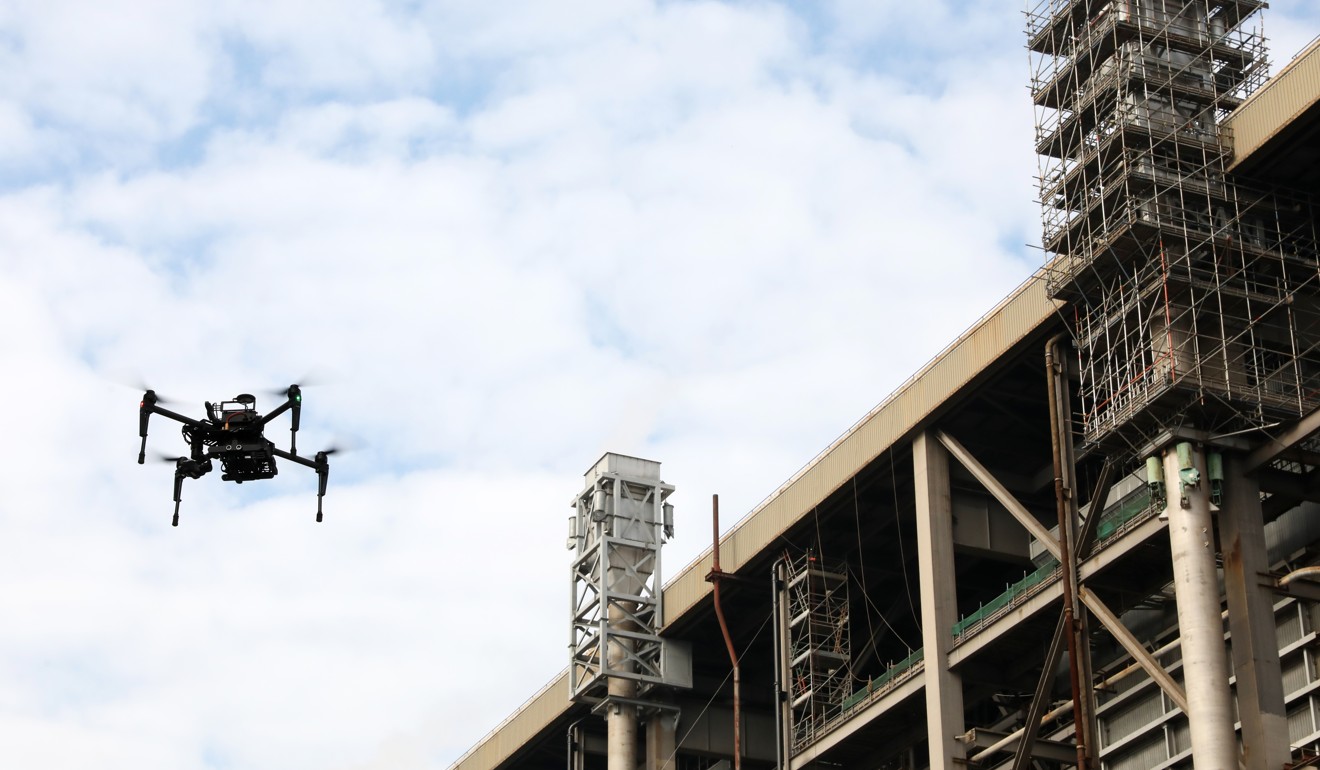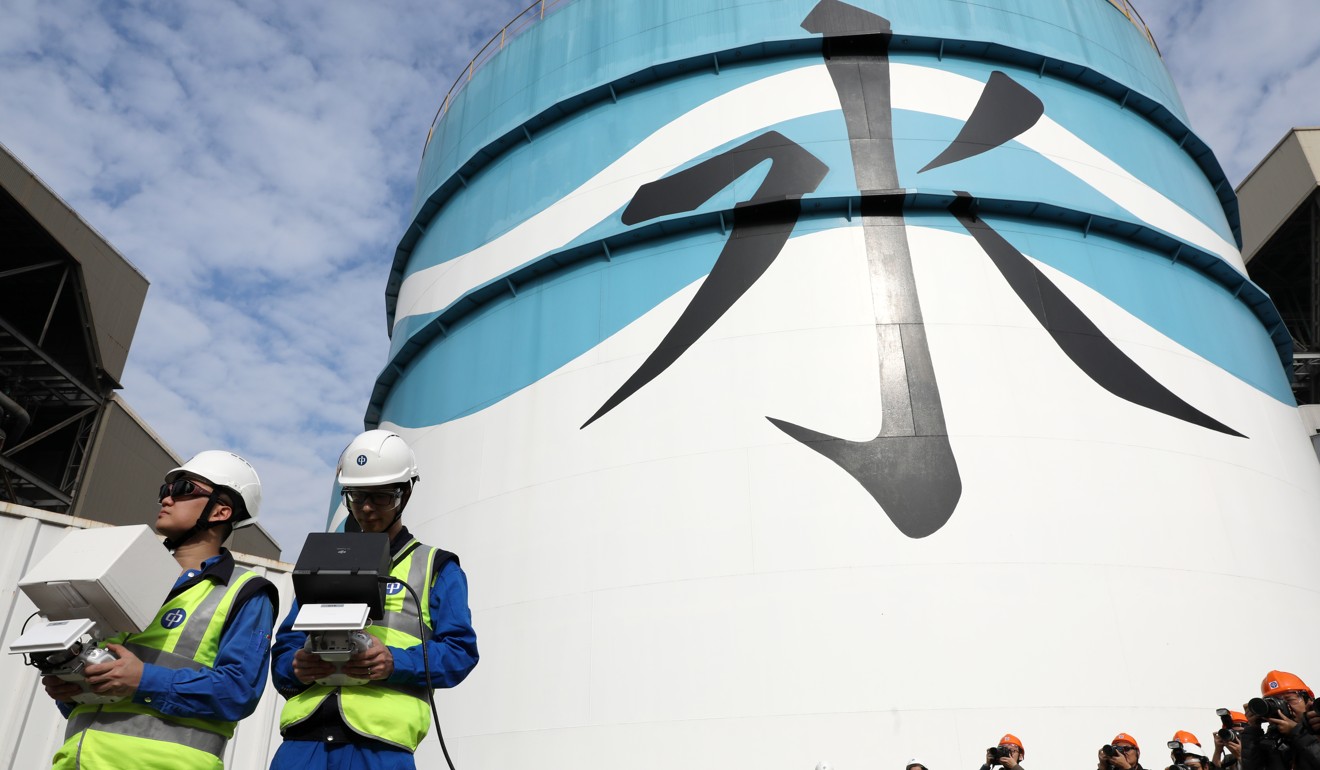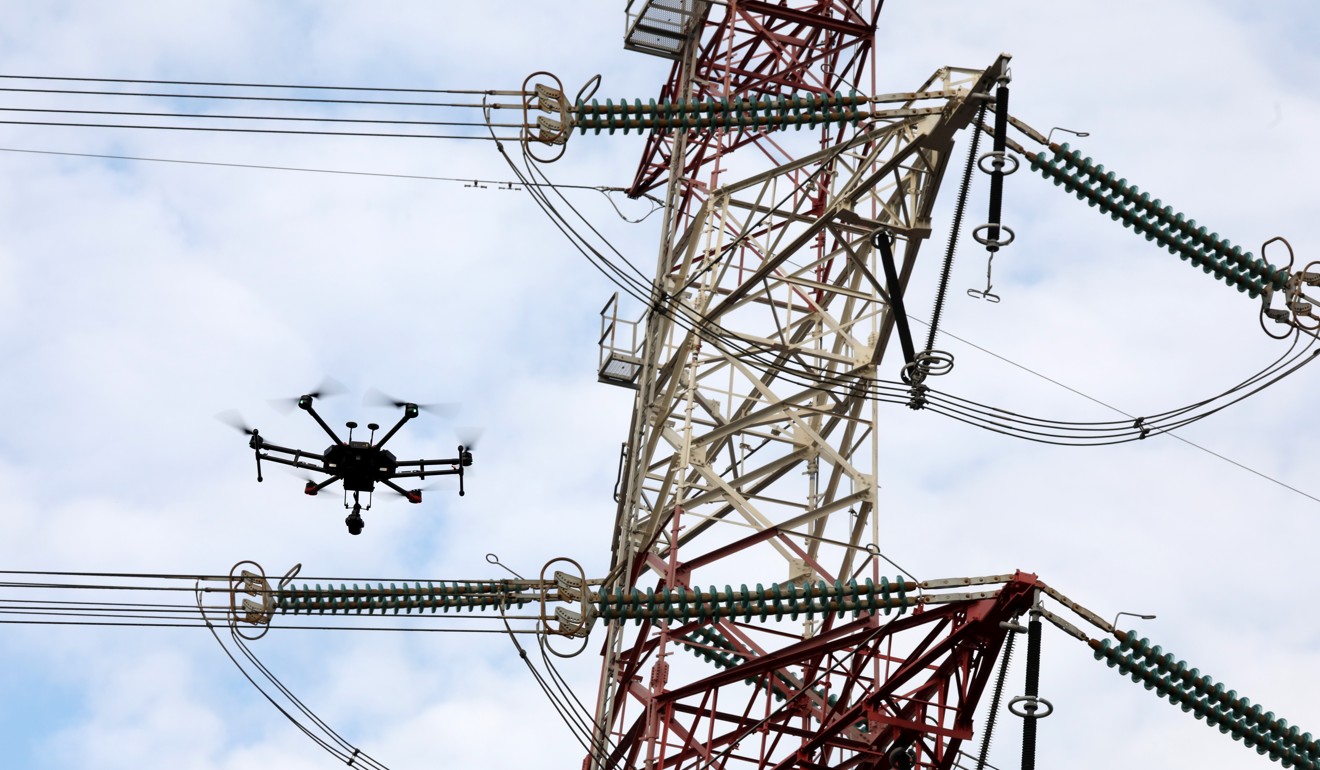
How Hong Kong electricity company CLP is saving millions of dollars, and potentially lives, with HK$80,000 drones at Tuen Mun’s Castle Peak Power Station
- Using drones has helped firm slash maintenance and inspection costs by forgoing the need to send humans to do potentially perilous tasks
- But operators must qualify in pilot competency with the Civil Aviation Department, as any drone weighing more than 7kg is classed as an aircraft
Vincent Yan Kwok-hung’s childhood dream was to fly planes. Things did not quite work out the way he had imagined – he is now an engineer at power utility CLP – but he takes comfort in the fact he has made it halfway – with drones.
Yan is one of three members of the company’s fledgling drone pilot team, formed ad hoc two years ago and now tasked with carrying out all aerial monitoring of facilities at its sprawling Castle Peak Power Station.
It is no cakewalk – the job involves piloting HK$80,000 (US$10,200) drones up the sides and down the power plant’s 250-metre-high concrete chimneys, and sometimes into boilers to check for wear and tear. Windy conditions and prowling birds of prey bring extra challenges.

“I worked at the airport for a while, always loved aviation and grew up wanting to be a pilot,” he said. “I guess this is the next best thing.”
Yan is one of the few hundred people in Hong Kong certified by the Civil Aviation Department to pilot drones for non-recreational purposes – a requirement most of the public are unaware of.
How DJI went from university dorm project to world’s biggest drone company
Using drones has helped the power station slash maintenance and inspection costs by forgoing the need to build scaffolding and send humans to do potentially perilous tasks.
Just two years ago, it would have taken two weeks and several million dollars to build scaffolding in a boiler for an inspection, and then dismantle it again. During those two weeks, the generating unit would have had to be shut. But with drones, a routine check takes about two days.

“Inspections are very important to ensuring the reliability of the electricity supply, so we need to be able to quickly identify problems before they happen, and solve them,” said senior director for generation Lo Pak-cheong.
“Drones make the work safer, cheaper and quicker, and by helping us scan blind spots, really expand the scope and frequency of our inspections.”
London’s Heathrow airport halts departures after drone is sighted, sparking police investigation
CLP is also deploying drones to inspect electricity pylons throughout the city.
In Hong Kong, any unmanned aerial system (UAS) weighing more than 7kg is classified as an aircraft and thus governed by civil aviation legislation. A permit to use them is required.

This means operators have to qualify in pilot competency with the department, maintain records for each flight – which must be made available on request – and ensure the machines are certified as airworthy.
Between 2016 and last year, the department processed 605 successful applications to operate a UAS.
Six applications were rejected and 156 could not be processed because they were withdrawn or had insufficient information from the applicants.
British police get extra powers to control drones after sightings shut down airport
Yan said the tests to qualify were no easy feat and his entire team had taken them three times before making the grade.
In recent years there have been concerns that Hong Kong’s regulations for the non-commercial use of drones were too rigid, and the department launched a consultancy study and public consultation on the issue last year.
“The CAD is committed to facilitating the usage and development of UAS while safeguarding public safety,” the department said this week.
It will consult lawmakers on proposed legislative amendments for a more “enhanced regime” sometime this year.

